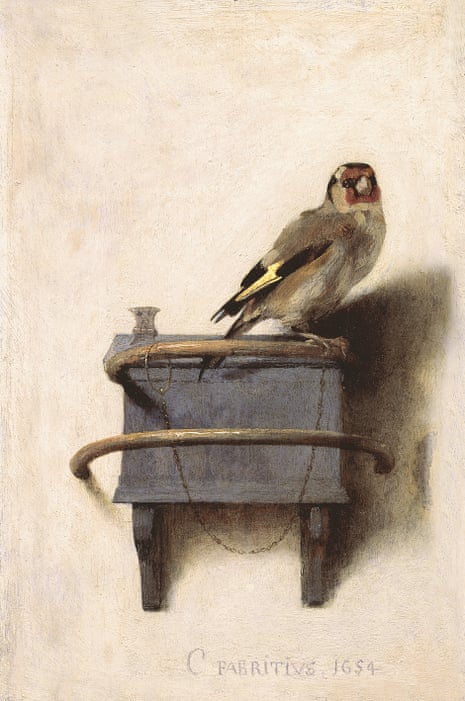Finch among equals
This little bird is one of art history’s superstars, thanks to Théophile Thoré-Bürger, a 19th-century critic whose writing cemented the posthumous rep of its painter Carel Fabritius and fellow Delft School artist Vermeer. Most, however, will know it from Donna Tartt’s best-seller, though for much of the novel the painting is under wraps, more concept than object.
Flights of fancy
Fabritius employed masterful optical effects in the pursuit of everyday realism. The life-sized bird seems poised to seduce its audience into thinking it’s a real creature perched against a whitewashed wall.
Shine a light
At the same time, Fabritius draws our attention to the mechanics of this illusion. Showing his teacher Rembrandt’s influence, he conjures its body from a flurry of intentionally visible brushstrokes, in both gossamer dashes and thick daubs. The serene light however is his particular innovation.
Rare bird
The painting is very rare. Fabritius left few works, having died young in a gunpowder blast that decimated his corner of Delft; The Goldfinch was created in his final year.
The Goldfinch is at the Scottish National Gallery, Edinburgh, Fri to 18 Dec

Comments (…)
Sign in or create your Guardian account to join the discussion